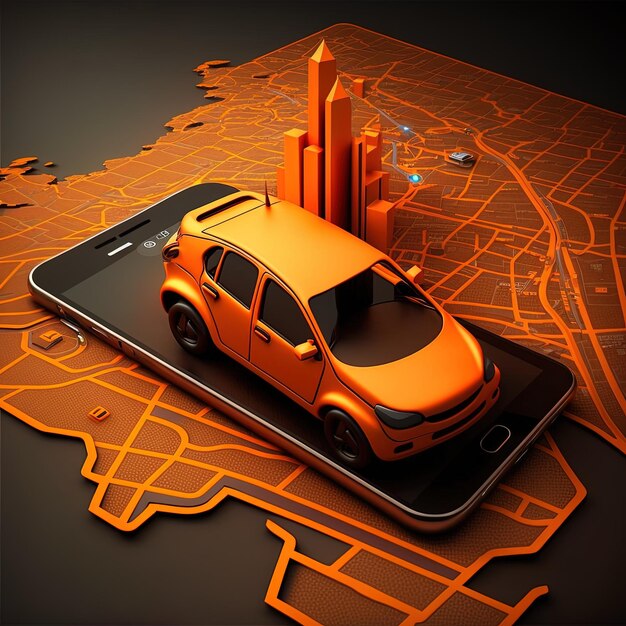Introduction:
Uber and other ride-sharing services have revolutionized the transportation business in recent years. These tech-driven alternatives have put traditional taxis, who were long the unquestioned lords of urban mobility, up against fierce competition. We find ourselves at a crossroads as customers, arguing about which form of transportation is preferable. In this blog article, we will compare the salient features of Uber with regular taxis, examining factors such as price, ease of use, security, and overall satisfaction to determine which is better. If you are considering venturing into the transportation industry and are interested in Uber Clone App Development Services, stay tuned as we explore the dynamics of these services in depth.
-
Cost Comparison:
The cost of transportation is one of the most important factors for each customer. Conventional taxis usually run on a metered basis, with base fares plus extra costs determined on distance and trip time. However, Uber frequently uses a dynamic pricing strategy called surge pricing, which modifies prices in response to demand. Even while this may result in higher expenses during rush hours, Uber usually has reasonable rates, particularly for short- to medium-distance travel.
Furthermore, customers may estimate rates before booking via Uber’s transparent pricing system, which offers a degree of predictability that conventional taxis might not offer. But it’s important to remember that things like surge pricing, peak hours, and local laws might affect how cost-effective Uber is overall when compared to other services.
-
Convenience and Accessibility:
Uber has become well-known for its intuitive interface, which lets users order cars with only a few smartphone clicks. Uber offers a plethora of convenient features, including real-time monitoring, anticipated arrival times, and cashless purchases using digital wallets or connected credit cards. This degree of convenience has raised the bar for the sector and forced more established cabs to improve and innovate their offerings.
Even if they’re still very common, traditional taxis might not have the same technology innovations as Uber. Generally, you have to wait in authorized taxi stands, wave down an available vehicle, or stand on the street to hail one. In contrast to the smooth experience offered by ride-sharing applications, the procedure may be less effective. Nonetheless, conventional taxis continue to be an essential and accessible form of transportation for people without cell phones or dependable internet connections.
-
Safety Considerations:
Every person who uses public transit has the utmost concern about safety. Passenger safety is a top priority for Uber and regular taxis, but the approaches differ. Both drivers and customers may assess their overall experience and offer comments using Uber’s rating system. Uber also improves security and peace of mind by giving consumers access to the driver’s details, such as name, photo, and number plate number.
While they are governed by local laws and may be inspected, traditional taxis might not be as transparent as Uber. However, municipal authorities usually license cab drivers and they go through extensive background checks. Taxi license numbers and other official symbols should be visible to passengers as this gives them some comfort about the validity of the vehicle.
-
Regulatory Compliance:
The legal environment in which traditional taxis and Uber operate differs greatly between cities and nations. Local transportation authorities put strict rules on traditional taxis. These rules frequently address things like insurance, licenses, car inspections, and background checks on drivers. Although these safeguards are in place to protect the safety of passengers, they may also make the system more inflexible and bureaucratic.
Uber’s introduction into the market has sparked discussions over driver categorization and regulatory issues. Uber drivers may be regarded as independent contractors in some areas, which presents issues with benefits and labor laws. Uber has struggled to navigate the complicated regulatory landscape, which has resulted in court disputes and sporadic service outages in some areas.
-
Environmental Impact:
Environmental sustainability is becoming a crucial factor for ethical shoppers to consider. Conventional taxis add to carbon emissions and air pollution since they frequently run on petrol or diesel engines. Uber, on the other hand, has made investments in sustainability projects, encouraged carpooling, and added alternatives for electric and hybrid vehicles to lessen its environmental effects.
Uber’s dedication to eco-friendly operations may appeal to customers looking for more ecologically friendly modes of transportation. However, variables including regional infrastructure, energy sources, and the accessibility of eco-friendly transit choices will determine how much of a decrease in the overall carbon footprint this results in.
-
The Human Element:
The user experience is significantly shaped by factors other than those that are logistical and technological, such as the human element. Traditional taxi drivers provide a lot of local expertise to their service since they may have years of experience navigating metropolitan streets. Insights on optimal routes, nearby attractions, and cultural subtleties may be provided by them, making traveler experiences more tailored and genuine.
Even though they are adept at utilizing GPS tools, Uber drivers might not be as familiar with the area. Passengers may select drivers with good ratings and favorable comments thanks to the rating system and user reviews, which improves the service’s overall dependability. The overall happiness of the journey is greatly influenced by the interpersonal interactions that exist between drivers and passengers in both Uber and regular taxis.
Conclusion:
There isn’t a universal solution to the ongoing Uber vs. conventional taxi argument. The decision between the two forms of transportation is based on personal preferences, the particulars of each trip, and priorities. Uber, with its cutting-edge and technologically advanced approach, provides a cost-transparent, convenient, and dedicated-to-sustainability method. Traditional taxis, on the other hand, offer a human touch, local knowledge, and obedience to regulations due to their long history of dependable service.
In the ever-evolving transportation landscape, both Uber and traditional taxis survive, each catering to a different set of passenger demands. For those seeking a customized experience, financial sensitivity, technical comfort, and environmental considerations, the choice between the two will depend on various criteria. It’s worth noting that with the rise of technology, the option to explore other alternatives has become more accessible, such as building taxi apps. This technological advancement opens up new possibilities for passengers, providing additional choices and further customization in their transportation decisions. As consumers, we are fortunate to have these alternatives that allow us to tailor our choices based on the criteria that matter most to us, facilitated by innovations like taxi app development.




